Eastern Spinebills are tiny honeyeaters that have slender necks or no necks, that are rotund or thin depending on their pose and the lighting conditions. Such differences can make bird identification tricky, especially for new birders. At least Eastern Spinebills have a unique bill but even that can appear fore-shortened at times.
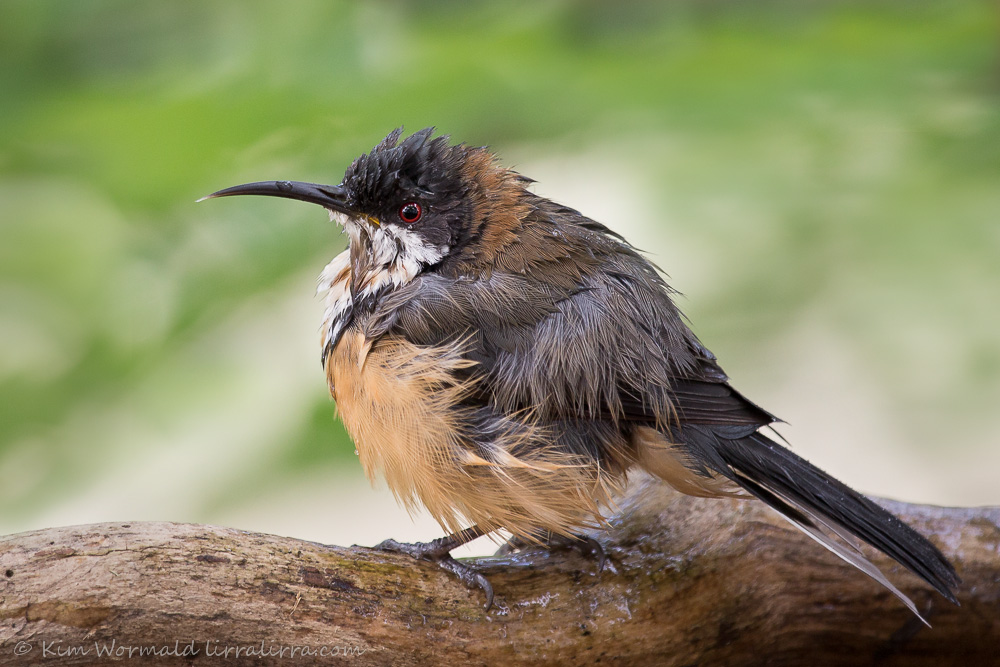
Eastern Spinebill
The image above shows a small round spinebill just after a dip. If I’m ever photographing birds near water I hold off pressing the shutter button until they’ve had a drink or a bath as I don’t want to frighten them away for the sake of a photograph. Quite often this means that I miss the shot but I’ve been a birder for many years and I get more pleasure from watching the birds than ever I would from startling them. It also means that I learn more about their behaviour. This spinebill took several dips and was quite relaxed by the time it heard the shutter button, even then it only glanced towards me before it continued bathing.
Eastern Spinebills usually look slender, as in the image above. They weigh approximately 11g and measure about 16cm, with a significant amount of that length being their down-curved bill.
The colouring of Eastern Spinebills is stunning. Males are more vibrantly marked than females with their dark grey crowns which curve around either side of the white breast and throat which has a rufous patch at its centre. Their underparts and upper backs are a soft rufous colour while their wings and tail are dark grey. The tail has distinct white outer tail feathers which are conspicuous in flight.
The long bill of Eastern Spinebills is perfect for extracting nectar from flowers, including those with tubular blossoms that can’t be reached by other species. They also eat insects including bees that are attracted to the same range of flowers.
The bright red eye of the Eastern Spinebill is a distinctive feature. I think they are delightful birds and am hoping to see some softly coloured juveniles later in spring.
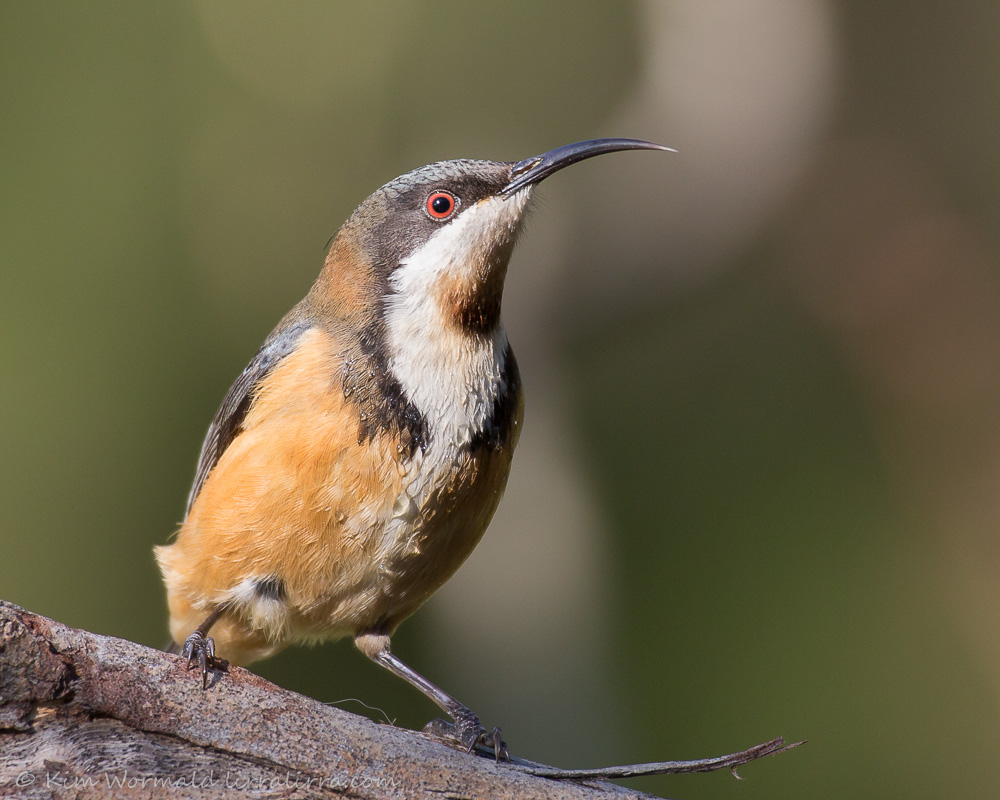
Eastern Spinebill
When I brush my Golden Retrievers I put fluffy tufts of their hair around the garden for birds to use when nest making. Magpies take copious amounts of the golden fluff but other birds use it too, including thornbills and Eastern Spinebills that use it to bind and line their nests. Spinebills’ nests can be as low as one metre from the ground making their nestlings vulnerable to cat and fox attack. Hopefully local nests will be successful this spring and I’ll be able to share images of fledglings with you later in the year.
Happy birding, Kim
~ Thank you for your visit and comments.
~ If you’d like to receive a weekly email informing you that lirralirra has been updated please add your email address to the ‘subscribe’ box above right

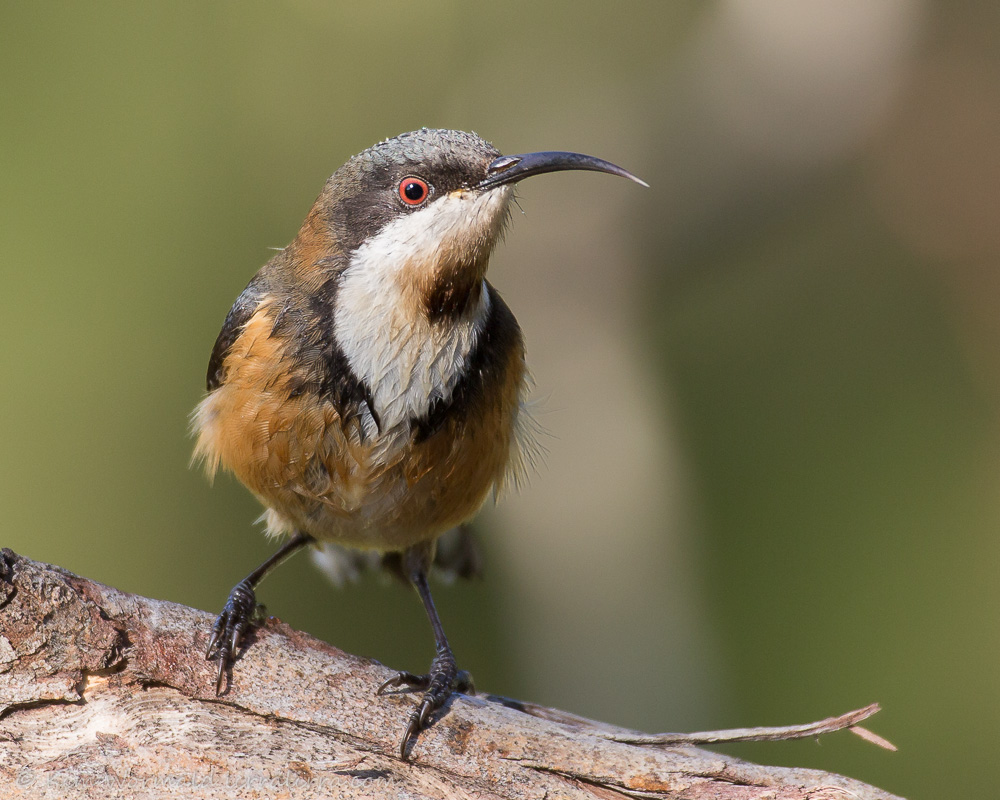
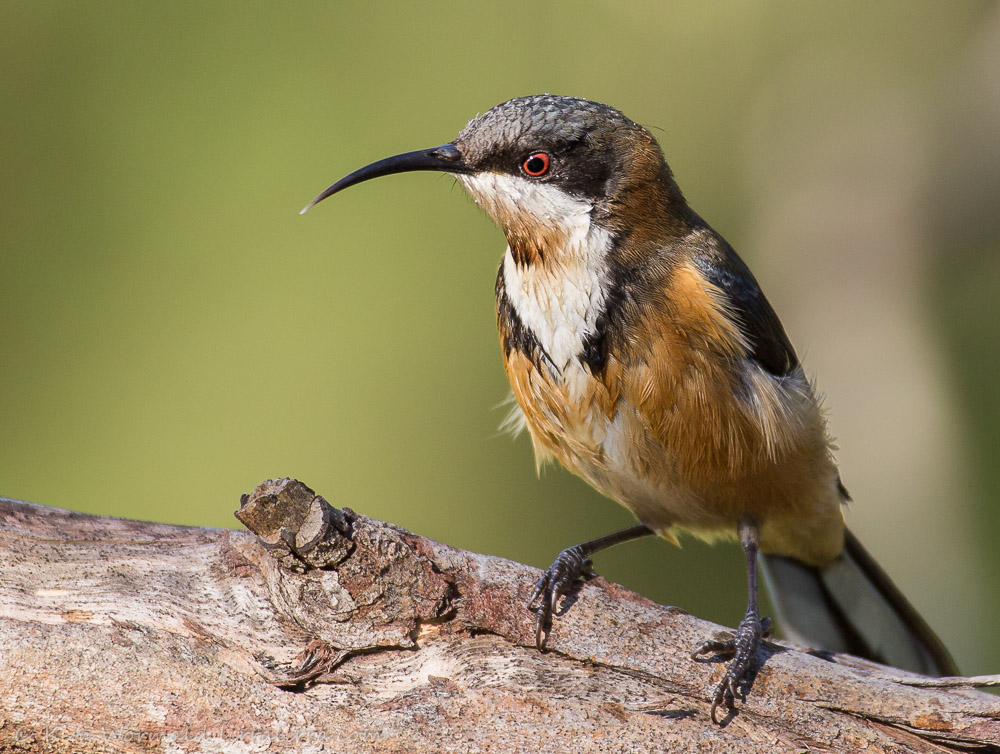
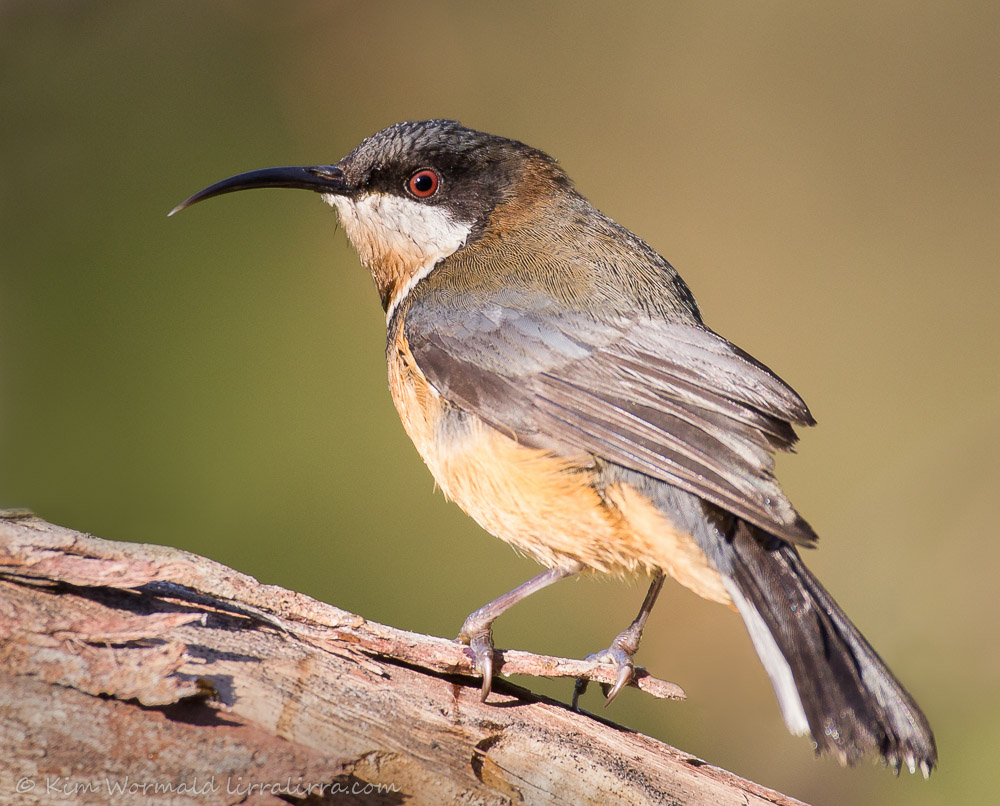

Love ES’s, I sit and watch them daily, so fast and they have a beautiful call. I have heaps of photos of them on my phone, not too bad.
I agree 100% Lynn. I’ve been watching them today too, hopefully I’ll be able to get some more photographs of them and their youngsters when I get a few minutes spare, Kim
Fantastic photos, all of them. Can I ask what gear you use? Lenses?
Hi Eric, if you look on the ‘equipment’ page you see my gear, plus on all my later posts I share what gear and settings I used for each shot. The recent fairywrens post shows quite a few.
Thank you for your kind comment, Kim
I am so excited. The last couple of weeks I have heard the call of a bird that I have not heard before. I have been living in this house for almost 11 years. And every time I would sneak outside to spot the bird it would fly away so quickly that all I could make out was its very long and thin beak. Apparently it is a honey eater – but not one of the usual Brown Honeyeaters, more common in the area. So today I sat outside for a while, near the callistemon tree it has been visiting, and low and behold it visited again. It kept within the branches though, making it difficult to see. Until it flew away straight over the top of me. I easily saw the giveaway marking of the spot on its throat – confirming for me that it was indeed an Eastern Spinebill. So happy to have this beautiful bird visit my garden. I hope its family keeps safe and is able to bring more friends to the area.
It sounds like you well and truly have the bird watching bug Vicki, and what an awesome bug it is! How brilliant to have spinebills visit your garden, your excitement is contagious
What a gorgeous bird! Excellent detail as usual in your images. I really enjoyed this series. The bird looked so different with its feathers all wet and fluffed out.
These honeyeaters are one of my favourite birds Julie, I’m glad you like them too.
Hello Kim,
The ES’s were one of our favourites in Tassie. Now we are living on mid North Coast of NSW we are overjoyed to see them in our new garden.
Beautiful pics as usual and I particularly like the last one with the range of detail in their brilliant colouring.
Alison
I’m SO pleased that your new garden is also home to spinebills. I can imagine how pleased you’d have been to see them, they are such pretty little birds and a joy to watch. It’s lovely to hear anecdotes like yours (and the others shared here), thank you.
Your Spinebill is a cool looking bird. I love its eyes and the bill. Awesome photos. Have a happy weekend!
Thank you Eileen, they are probably the closest we have to a hummingbird, hopefully I’ll get a shot of them hovering one day that’s worth sharing. Have a lovely week!
What an amazing and interesting bird. I love the red eye and the curved bill. Your images are amazing of these cool birds. We too, leave poodle hair out for the birds in spring. Some use it and some don’t.
They are lovely birds, I always enjoy seeing them. That’s great about the poodle hair for your birds – imagine all the soft nests around the world
Great photos, Kim….I love them.
Thank you Carole
These little dudes look a bit like Robert Helpmann! Super cute versions great photos as always
great photos as always
I’m glad you like them! Have you been watching a bit too much Chitty Chitty Bang Bang by any chance?
What a cutie this one is, my first thought on seeing this little fellow was (this fellow has either been in a fight or went for a swim ). Happy to to see he has just enjoyed a nice bath.
I’m glad it wasn’t a fight too, I don’t think they’d have much luck in a squabble.
To me my local Eastern Spinebills always look grumpy & upset? nice set of pictures, thank you Kimberley.
nice set of pictures, thank you Kimberley.
I’ve never thought that John but looking at the down-curved bill I can see what you mean!
Oh my. Oh my, oh my.
Stunning captures – and I hope you see the juveniles later on too. And show them to us.
I put out combings from the cats as well. And hope it gets used. And a Spotted Pardalote which nested in a post plant on our back veranda did. Joy and bliss.
That’s interesting about cat fluff EC, how brilliant to have pardalotes nesting on your veranda! Their nest must have been incredibly soft.
stunningly crisp shots kim. well done
love
glenn
Aw! Thank you x